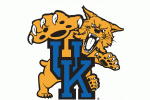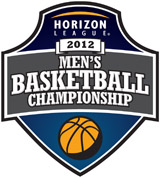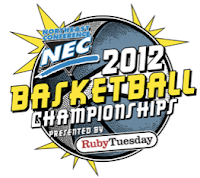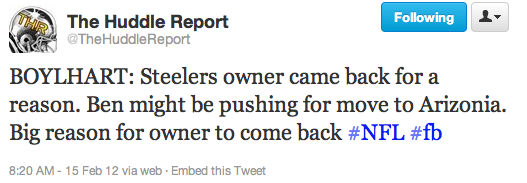#1 Seeds
There is a big debate right now with how the top seeds will fall. One thing is for sure, the top two overall seeds are locked up.
The other two #1 seeds are up for grabs right now between Kansas, Duke, Michigan State, and North Carolina. Missouri and Ohio State were contenders for the top line, but have dropped off in the last few weeks. As things stand right now, I think if any of the 3 conferences (Big Ten, Big XII, ACC) have the same team win both the regular season and the conference tournament, that team will definitely get a #1 seed. Kansas clinched the Big XII regular season crown, which gives them a slight edge right now. Duke has head-to-head wins over Kansas, Michigan State, and North Carolina (though will have a rematch against the Tar Heels for the outright ACC Championship on Saturday). Therefore, by my estimation, the other two #1 seeds right now are...
Yes, you can argue that either Michigan State or UNC belong here too. But if the season ended today, I think these two teams would be on the top line.
Locks
At this point in the season, I have 27 teams that are "In" the field for sure: Kentucky, Syracuse, Duke, Kansas, UNC, Michigan St, Marquette, Missouri, Baylor, Ohio St, Georgetown, Michigan, Indiana, Wisconsin, Louisville, UNLV, Temple, Wichita St, Florida St, Florida, Vanderbilt, Murray St, Creighton, St. Mary's, Gonzaga, Memphis, Southern Mississippi
Additionally, I have 12 teams that "Should be in" barring some kind of epic collapse: Notre Dame, San Diego St, Virginia, UConn, Purdue, Kansas St, New Mexico, Alabama, West Virginia, Seton Hall, Iowa St, California.
Given Cal's loss to Colorado, Washington is now the Pac-12 leader and I think the committee will have a hard time not putting the regular season Pac-12 champ in the tournament, so for now I think they are in the "Should Be In" category. If Washington drops a game somewhere and Cal wins the Pac-12, Washington heads right back to the bubble.
There are 19 conference champions that probably won't get an At-Large bid, though cases like Long Beach St, Iona, Oral Roberts, Belmont and Middle Tennessee could make things interesting if they don't win their tournaments.
The Bubble
That left me with 9 bubble spots to distribute between what I identified as 20 teams in contention for the tournament. Looking at things like Top 50 wins, Top 100 wins, 100-200 losses and 200+ losses, I moved Northwestern, Miami, Illinois, Cincinnati, and Mississipi St to the top of the bubble. Yes, I know Illinois and Mississippi St don't pass the eye test, but looking at their resumes, they both have decent bodies of work. Illinois has 4 Top 50 wins and only 2 losses to teams with RPIs over 100. Mississippi St similarly only has 2 bad losses to teams with 100+ RPIs and have 3 Top 50 wins. Cincy's Non-conf SOS is horrendous, but they have 5 Top 50 wins so it was hard to keep them out given how bad some of the other teams were.
I took a look at the bottom of the bubble next to chop off the bottom end and eliminated NC State, Colorado, Ole Miss, UCF, LSU, Dayton, and St Joes (in that order) based on overall resume weaknesses.
So then we come down to the "Last 4 In"/"First 4 Out" discussion. The 8 teams I was left with at this point were: Arizona, BYU, Colorado St, St Louis, South Florida, Texas, VCU, Xavier.
Of this group, Texas had the most Top 50 wins (3) which gave them an advantage and moved them to the top of the "Last 4 In" group. USF is a paltry 1-7 vs the Top 50 with their best win over Seton Hall, whose RPI is 44, so not really a convincing Top 50 win at that.
USF's best road win was over Pitt (RPI 97) and that was their only Top 100 road win. They also lost to VCU, which moved VCU up on my board. USF got dropped to the bottom of my "First 4 Out" category.
Despite struggling since "The Fight", Xavier has a solid all-around resume. They have 2 Top 50 wins over Vandy (on the road, big plus) and Purdue and are 5-3 vs the Top 100 with all 3 losses coming on the road in conference play. They have only lost 1 game to a team outside the Top 100. Due to the strength of some mid-majors, the losses they took right after "The Fight" (Oral Roberts, Long Beach St, Gonzaga) don't look so bad since all those teams are in the Top 50 of the RPI. I put Xavier in based on their quality wins and lack of bad losses.
I eliminated Colorado St next based on their "Home Court Hero" status. They have some impressive wins - San Diego St, New Mexico - but they are both at home. In fact, all 6 of their Top 100 wins were at home. Their best road win (and actually their ONLY road/neutral win) against a Top 200 team was over #135 UTEP. The Rams computer numbers are strong (mainly based on playing Duke and Southern Miss in non-conference play, both games they lost by over 20) but they just don't win away from home.
That left me with 4 teams fighting over 2 spots: Arizona, BYU, St Louis, Texas.
It might be surprising that St Louis has dropped this far, but their overall resume is really sparse on quality wins. They have no Top 50 wins and their best wins are over St Joe's and Washington. The Billikins also have losses to Loyola Marymount (RPI 114) and an inexcusable loss to 6-23 Rhode Island (RPI 251).
BYU has a very similar resume with a 5-5 record against the Top 100 (St Louis was 5-4). However, BYU has a Top 50 win over Gonzaga. BYU also has 2 100+ losses, one of which was also to Loyola Marymount. However, what separated them from St Louis was their other loss was to Utah St (RPI 154). BYU has a better win and a less bad worst loss than St Louis, which gave them the edge.
It might be surprising that St Louis has dropped this far, but their overall resume is really sparse on quality wins. They have no Top 50 wins and their best wins are over St Joe's and Washington. The Billikins also have losses to Loyola Marymount (RPI 114) and an inexcusable loss to 6-23 Rhode Island (RPI 251).
BYU has a very similar resume with a 5-5 record against the Top 100 (St Louis was 5-4). However, BYU has a Top 50 win over Gonzaga. BYU also has 2 100+ losses, one of which was also to Loyola Marymount. However, what separated them from St Louis was their other loss was to Utah St (RPI 154). BYU has a better win and a less bad worst loss than St Louis, which gave them the edge.
Down to 3. I did BYU vs VCU first. Again, two similar resumes, but BYUs was marginally better. BYU is 5-5 vs the Top 100 and VCU is 4-4. Both had a Top 50 win, but BYUs was over Gonzaga (RPI 18) and VCU's was over South Florida (RPI 46). BYU's best "non-home" win was over Nevada (RPI 56) and VCU's was over Akron (RPI 58). Both teams had 2 losses to teams with 100+ RPIs, but BYU's worst loss was to Utah St (RPI 154) was better than VCU's worst loss was (Georgia Tech, RPI 175). To cap it off, BYU's computer numbers were better (RPI 49, SOS 107) than VCU's (RPI 60, SOS 213).
This put BYU in the field, as they were better than both VCU and St Louis. I figured I should analyze Arizona next, because if they were better than BYU, I wouldn't need to look at VCU vs St Louis as they would both be out.
Arizona's also had 1 Top 50 Win (at Cal, RPI 36). Arizona is 4-8 against the Top 100 (as opposed to BYU's 5-5) but their wins are better. Arizona's best 2 wins (Cal and New Mexico St, RPI 71) were on the road (as opposed to BYU, whose only Top 100 non-home win is a neutral site win over Nevada). On top of the better wins, Arizona only has 1 loss to a team with an RPI over 100 (at UCLA, RPI 131). While Arizona's computer numbers aren't as good as BYUs, they have a better slate of Top 100 wins and less losses to teams with 100+ RPIs. This was enough for me to put Arizona over BYU, knocking VCU and St Louis from contention.
Arizona's also had 1 Top 50 Win (at Cal, RPI 36). Arizona is 4-8 against the Top 100 (as opposed to BYU's 5-5) but their wins are better. Arizona's best 2 wins (Cal and New Mexico St, RPI 71) were on the road (as opposed to BYU, whose only Top 100 non-home win is a neutral site win over Nevada). On top of the better wins, Arizona only has 1 loss to a team with an RPI over 100 (at UCLA, RPI 131). While Arizona's computer numbers aren't as good as BYUs, they have a better slate of Top 100 wins and less losses to teams with 100+ RPIs. This was enough for me to put Arizona over BYU, knocking VCU and St Louis from contention.
Therefore, my Last 4 In were: Texas, Xavier, Arizona, BYU
And my First 4 Out were: VCU, St Louis, Colorado St, South Florida
I was honestly surprised that St Louis dropped so far down the board, especially being a 21-6 team, but they just don't have the resume right now for me to justify putting them in the field. They have a huge opportunity tonight against Xavier at home that is almost a must-win for both teams. The A-10 standings are a mess right now. Temple is the clear leader, but there are 6 teams within 2 games of the 2nd place Billikins. The top 4 get byes in the conference tournament, so St Louis should be fairly safe for a bye, but there are 5 teams fighting over the last 2 byes that are all a game apart in the standings. In all likelihood, we'll see some bubble-bursting elimination games in the A-10 tournament involving St Joes, Xavier, and St Louis.
The Bracket
Here's a quick look at my current bracket:
South Region
1. Kentucky vs 16. Stony Brook/Miss Valley St
8. Southern Miss vs 9. Kansas St
5. Temple vs 12. Illinois
4. UNLV vs 13. Iona
6. Creighton vs 11. California
3. Baylor vs 14. Belmont
7. Gonzaga vs 10. Iowa St
2. Marquette vs 15. Davidson
East Region
1. Syracuse vs 16. UNC-Asheville/Savannah St
8. Memphis vs 9. New Mexico
5. Wichita St vs 12. Mississippi St
4. Wisconsin vs 13. Texas/BYU
6. St. Mary's vs 11. Miami
3. Ohio St vs 14. Akron
7. Notre Dame vs 10. Harvard
2. Missouri vs 15. Weber St
West Region
1. Duke vs 16. UT-Arlington
8. Purdue vs 9. Washington
5. Florida vs 12. Drexel
4. Louisville vs 13. Middle Tennessee
6. Murray St vs 11. Northwestern
3. Georgetown vs 14. Nevada
7. Virginia vs 10. Seton Hall
2. Michigan St vs 15. Bucknell
Midwest Region
1. Kansas vs 16. LIU-Brooklyn
8. UConn vs 9. Alabama
5. Florida St vs 12. Long Beach St
4. Indiana vs 13. Xavier/Arizona
6. Vanderbilt vs 11. Cincinnati
3. Michigan vs 14. Oral Roberts
7. San Diego St vs 10. West Virginia
2. North Carolina vs 15. Valparaiso

















































